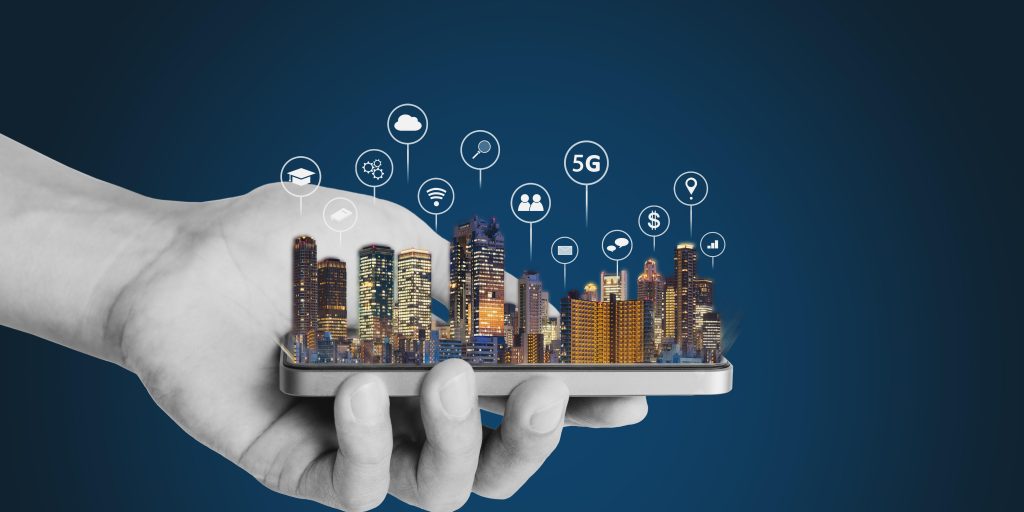Four reasons why smart communities will take 2023 by storm
The last three years have been a rapid-fire series of challenges for local government leaders, from a devastating pandemic targeting the population’s most vulnerable to widespread economic downturn. After navigating this volatility, leaders are seeking out new and innovative strategies to future-ready their communities and reach their goals.
One such strategy is the development of a smart community. These digitally transformed environments are unlocking the future of secure, connected and resilient living, and in 2023, we can expect them to be a top priority for municipal leaders. Not convinced? Here are four reasons why smart cities will become the gold standard in the new year, and why local governments can’t afford to be left behind.
1. Citizens expect leaders to focus on social equity
Research shows investing in social equity and justice is a must for local governments, with 77 percent of surveyed city leaders indicating their smart city initiatives include social equity requirements.
Families and businesses are seeking out communities that are diverse and inclusive, and which ultimately reflect their own values. Digitizing city infrastructure and examining the data can help local government leaders achieve this.
This includes expanding access to internet and technology services, investing in programs that support underserved communities, delivering greater transparency through interdepartmental data sharing and addressing deferred maintenances in buildings that provide public services, including libraries, senior centers, town halls and fire and police complexes (that often have community center common areas for citizens to utilize). When planning smart community initiatives, it’s important that everyone has a seat at the table; communities should also actively seek out localized partners from underserved communities to provide leadership and support throughout the project’s lifespan.
2. Net zero communities are the future of local government
As the effects of climate change are felt across the globe, citizens expect their local government leaders to prioritize resiliency in pursuit of a healthier community and planet. Components of a “resilient community” can be ones that focus on pandemic and crisis response efforts, predictive analytics investments, microgrid development and work force enhancement initiatives. Smart communities are increasingly becoming the key to an environmentally conscious municipality and can kick-start the roadmap to net zero if carbon reduction is one of their priorities.
In addition to renewable technologies like solar photovoltaic (PV) panels or energy efficient solutions like LED lighting, smart communities take sustainability to the next level by producing a wealth of data that can be analyzed and leveraged by city officials to improve overall efficiency. Connected building systems, energy management solutions and water conservation technologies provide deep, granular insight into greenhouse gas (GHG) emissions, energy consumption, water waste and more. Based on this data, city officials can identify opportunities for improvement that enhance resiliency, their sustainability scores and streamline operations and minimize costs.
3. Funding is a growing challenge
Local government leaders recognize that smart community development represents the future. But investing in these projects while minimizing the impact on taxpayers is critical, especially as families find themselves tightening their budgets in response to nationwide inflation. Unsurprisingly, 52 percent of municipal leaders say competing budget priorities are an obstacle to achieving objectives.
Innovative funding mechanisms can be deployed that directly align with this need for spending discretion. From private-public partnerships that can deliver consistent expenditures to performance contracts that are paid for by guaranteed energy and operational savings, it’s easier than ever for municipal leaders to bring their vision for a smart city to life while mitigating impact on taxpayers. In addition, many smart community initiatives directly fall within the purview of state and federal funding programs like the Infrastructure Investment and Jobs Act, furthering local governments’ ability to make updates without impacting budgets. Working with trusted industry advisors make navigating these funding strategies simple, with studies showing four out of five city leaders view partnerships as very important or extremely important to reaching their goals.
4. Competition between communities is increasing
In a hybrid world where many employees work remotely, untethered to a local workplace, families and businesses now have the freedom to put down roots anywhere they want. Local government leaders are now recognizing the need to invest in their communities to remain highly competitive and attract these individuals, so they contribute to economic vibrancy. It’s why 44 percent of municipal leaders name “quality of life” as the largest driver of their smart city initiatives.
Investing in transportation, parks and recreation and public services help foster a community that prioritizes an optimal quality of life for residents. Secure, connected and resilient communities play a big role in that initiative, whether that includes installing LED lighting at bus stops for improved safety or updating temperature controls in libraries to enhance hosted events like children’s story time. Communities that are digitally enabled to better serve residents are better equipped to attract and retain families, businesses and visitors alike.
Smart cities will lead the way in 2023 and beyond
While no city leader has a crystal ball, it’s undeniable that secure, connected and resilient communities will be the answer to some of their biggest challenges in the new year. By investing in digitally enabled initiatives, municipal leaders can develop strategies and associated programs that will optimize live, work and serve areas, for years to come.
Stay tuned in 2023 for thoughts on “Innovation Districts” and how they will bring economic vibrancy to municipalities across the globe.
As the senior director for local governments at Johnson Controls, Lisa Brown is responsible for leading the $400-million local government and smart infrastructure market globally, including the development of strategies, offerings and innovations for service and systems markets to drive profitable growth. She is recognized as a thought leader in smart city solutions, IoT and ecosystem partner development in products, contracting and service initiatives.




















